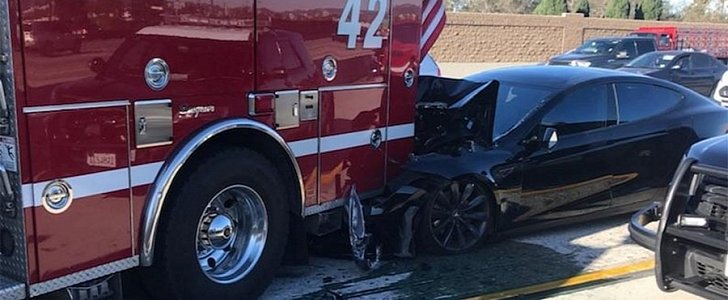Tesla prides itself on having the most advanced driver aid system in the market, and even though the independent jury is still out on whether that's true or not, most of the current owners have bought into that.
All Tesla vehicles sold after October 2016 came equipped with the hardware necessary for Level 4 autonomy, according to the company. After famously deciding against LIDAR and opting for a mix of radar detection, video cameras, and short-range ultrasonic sensors, Tesla said that was all the equipment it needed to allow the AI to control the car in any situation. One day.
That day was never specified in any way, but customers were asked to pay an optional premium if they wanted their vehicles' systems unlocked and ready to receive the much-awaited update. And yet up to this point, the Autopilot 2.0 (as they called it) still performs less satisfactory than the 1.0 version, developed with Israeli firm Mobileye.
Tesla's reasons behind fitting the hardware on all vehicles, regardless of whether the customers pay to have full use of them or not, is easy to understand: it allows the company to have a huge fleet of cars out there that run the self-driving system in ghost mode, gathering the much-needed data for the learning algorithms.
But the owners are starting to show their frustration with the slow progress on the new Autopilot, with their worries fueled further by the recent revelation of the fact Tesla didn't register a single mile of autonomous test driving on the public roads of California, deciding to keep its advancements hidden from the public.
Proving Twitter is a weapon that works both ways, the Model S and Model X owners have begun complaining to Elon Musk, which prompted a response from the CEO. None other than Chris Lattner, the head of the Autopilot team for much of 2017, was among those expressing their disappointment, but it wasn't him that Musk chose to reply to.
The CEO's message was a short and concise one, giving very little in the way of details. He said the "release candidate [is] in final testing phase," and that was it for the usually very talkative Musk. Six minutes later, however, he replied to another tweet suggesting we shouldn't expect too much from the announced update as the more important features are still too "unreliable yet."
In other words, the message conveyed by Musk was that work is being done, but the team is still some distance away from bringing any major improvements to the system. How far? Well, we can't say "nobody knows," but it's definitely not somebody who has the liberty to say anything about it. Let's just wait and see what the new update brings and see where it goes from there.
That day was never specified in any way, but customers were asked to pay an optional premium if they wanted their vehicles' systems unlocked and ready to receive the much-awaited update. And yet up to this point, the Autopilot 2.0 (as they called it) still performs less satisfactory than the 1.0 version, developed with Israeli firm Mobileye.
Tesla's reasons behind fitting the hardware on all vehicles, regardless of whether the customers pay to have full use of them or not, is easy to understand: it allows the company to have a huge fleet of cars out there that run the self-driving system in ghost mode, gathering the much-needed data for the learning algorithms.
But the owners are starting to show their frustration with the slow progress on the new Autopilot, with their worries fueled further by the recent revelation of the fact Tesla didn't register a single mile of autonomous test driving on the public roads of California, deciding to keep its advancements hidden from the public.
Proving Twitter is a weapon that works both ways, the Model S and Model X owners have begun complaining to Elon Musk, which prompted a response from the CEO. None other than Chris Lattner, the head of the Autopilot team for much of 2017, was among those expressing their disappointment, but it wasn't him that Musk chose to reply to.
The CEO's message was a short and concise one, giving very little in the way of details. He said the "release candidate [is] in final testing phase," and that was it for the usually very talkative Musk. Six minutes later, however, he replied to another tweet suggesting we shouldn't expect too much from the announced update as the more important features are still too "unreliable yet."
In other words, the message conveyed by Musk was that work is being done, but the team is still some distance away from bringing any major improvements to the system. How far? Well, we can't say "nobody knows," but it's definitely not somebody who has the liberty to say anything about it. Let's just wait and see what the new update brings and see where it goes from there.
Release candidate in final testing phase
— Elon Musk (@elonmusk) February 2, 2018
Early access build and especially Dev build are feature-rich, but the features aren’t reliable enough yet
— Elon Musk (@elonmusk) February 2, 2018

